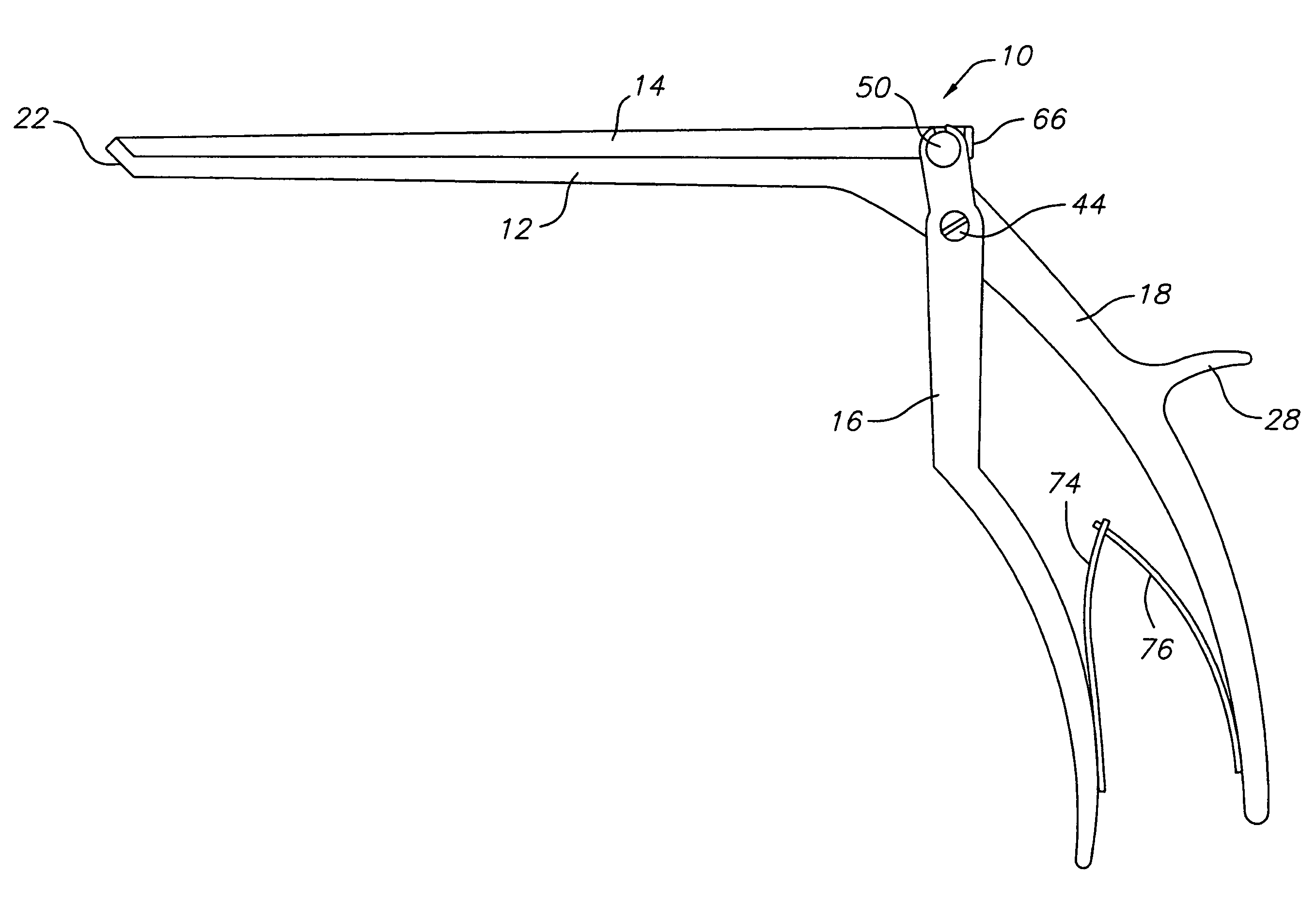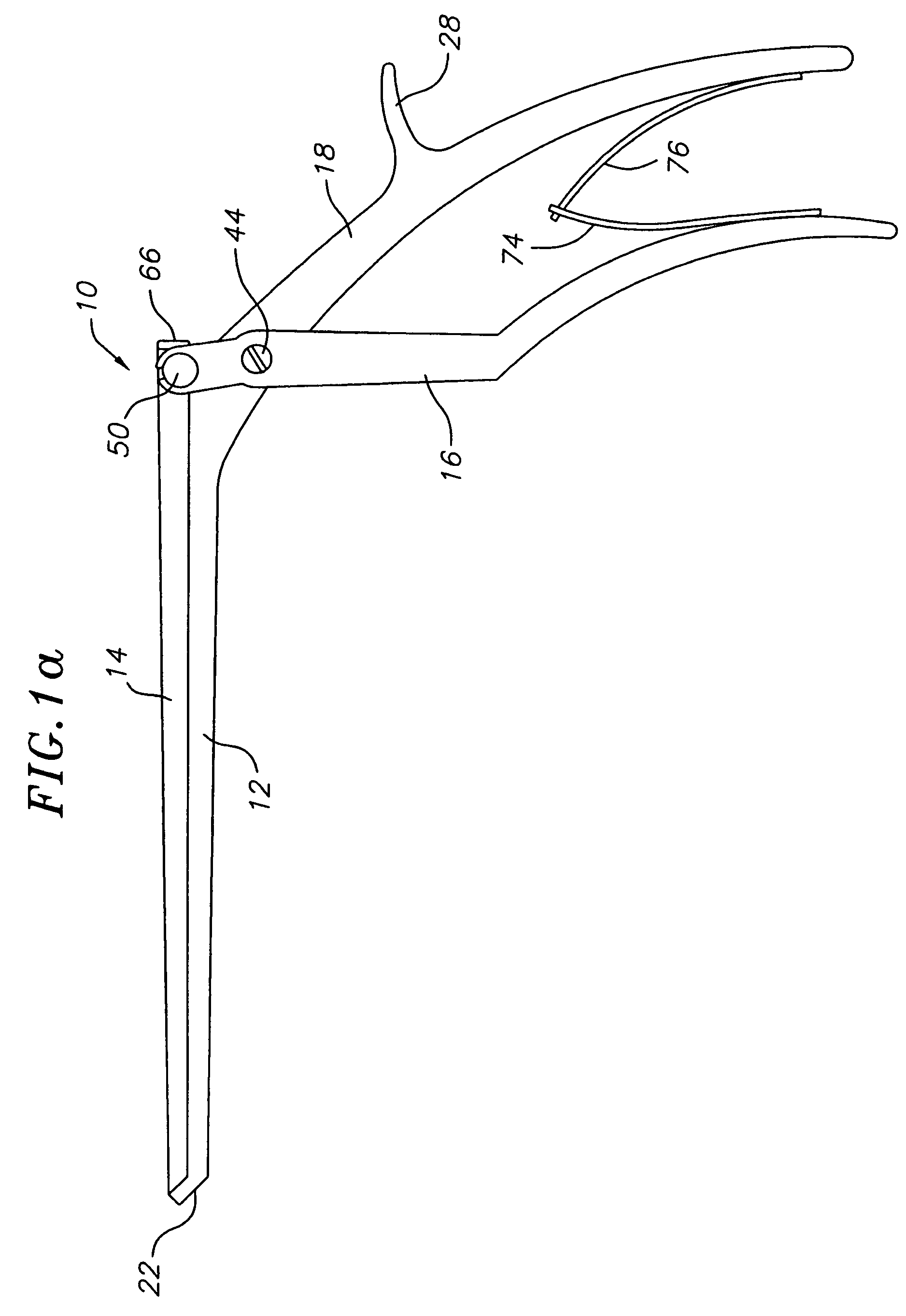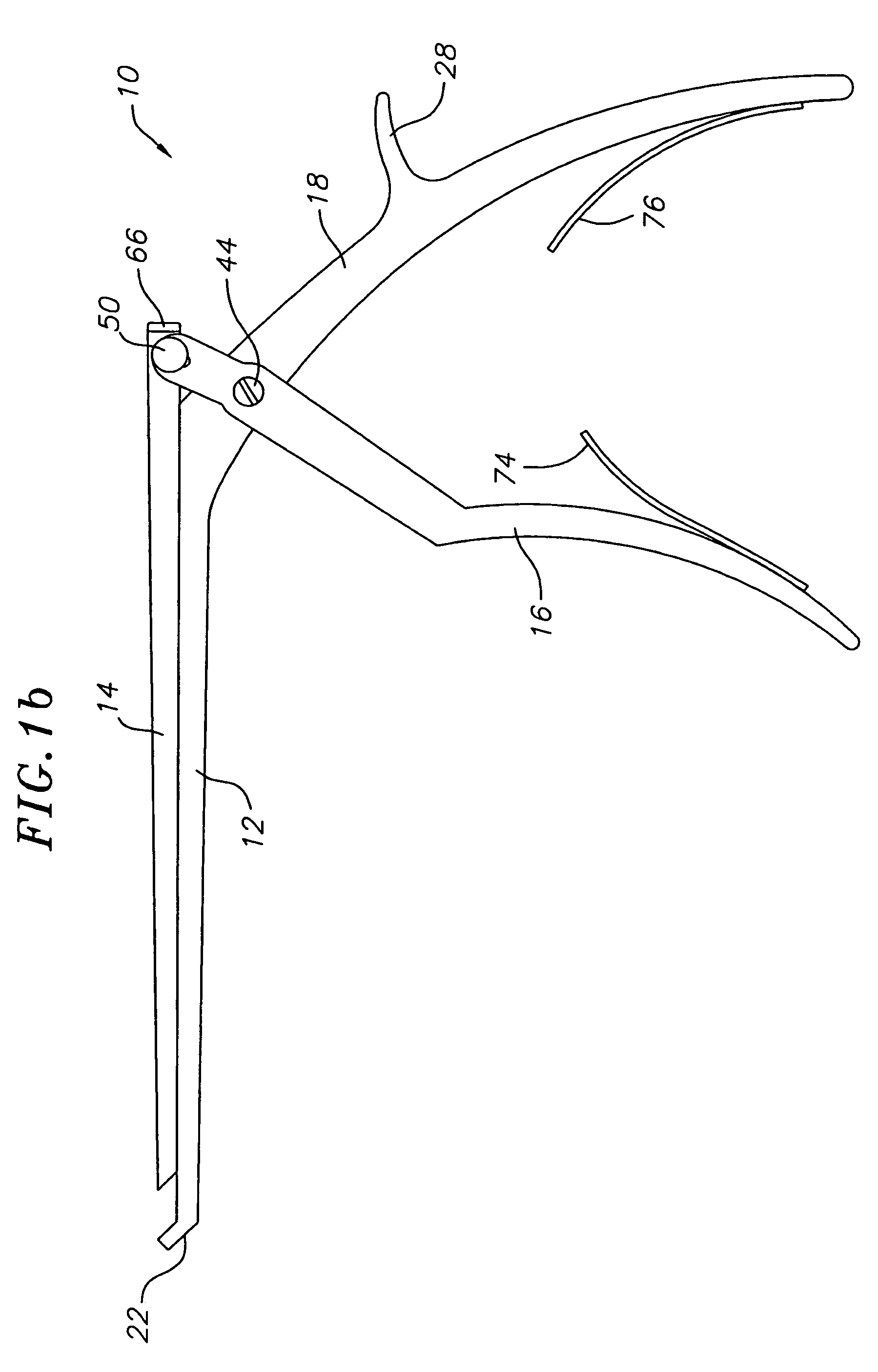Surgical rongeur
a surgical and rongeur technology, applied in the field of surgical rongeurs, can solve the problems of increasing the amount of time needed to complete the surgical task, dull cutting edge, and only a single bone chip in the cup
- Summary
- Abstract
- Description
- Claims
- Application Information
AI Technical Summary
Benefits of technology
Problems solved by technology
Method used
Image
Examples
Embodiment Construction
[0038]The present invention is directed to a surgical rongeur for cutting bone and other tissue. The described exemplary embodiments of the rongeur of the present invention enable a surgeon to make and store multiple cuts of bone or other tissue without having to remove the rongeur from the surgical situs. In addition, the removable and replaceable cutting slide used with this rongeur can eliminate the need for costly, often ineffective, sharpening services.
[0039]In an exemplary embodiment, shown in FIG. 1, a surgical rongeur 10 generally includes an elongated track member 12 having proximal and distal ends and a longitudinal axis, a removable elongated cutting slide 14 having proximal and distal ends, a pivot handle 16 and a support handle 18. The distal end of the elongated track member 12 terminates in a foot plate 22 which extends upwardly from, and approximately perpendicularly to, the elongated track member 12. The foot plate 22 extends upwardly for a length approximately equa...
PUM
 Login to View More
Login to View More Abstract
Description
Claims
Application Information
 Login to View More
Login to View More - R&D
- Intellectual Property
- Life Sciences
- Materials
- Tech Scout
- Unparalleled Data Quality
- Higher Quality Content
- 60% Fewer Hallucinations
Browse by: Latest US Patents, China's latest patents, Technical Efficacy Thesaurus, Application Domain, Technology Topic, Popular Technical Reports.
© 2025 PatSnap. All rights reserved.Legal|Privacy policy|Modern Slavery Act Transparency Statement|Sitemap|About US| Contact US: help@patsnap.com



